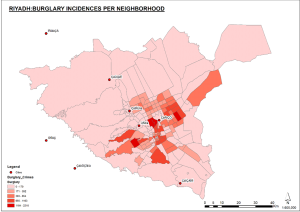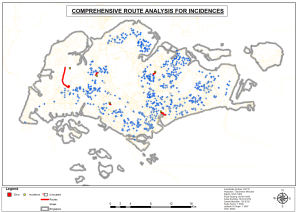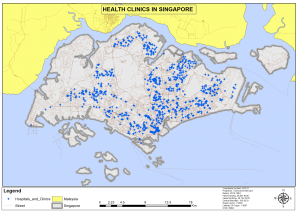GIS (Geographic Information System) and remote sensing are important tools used in geography, environmental science, and natural resource management. They are used to capture, store, manage, analyze, and present data that are linked to locations on the earth’s surface. Students pursuing degrees in these fields are often required to complete homework assignments that involve the use of GIS and remote sensing. While these assignments are essential for learning, they can be challenging and time-consuming. This is why some students choose to pay someone to do their GIS and remote sensing homework. Below are some research topics on GIS and remote sensing for your homework.

Easy research topics on GIS and remote sensing
- Analysis of the impact of land use/land cover changes on the environment using GIS and remote sensing techniques.
- Assessment of urbanization trends and their effects on the environment using GIS and remote sensing.
- Monitoring and mapping of forest cover and deforestation using GIS and remote sensing.
- Mapping and characterization of wetlands and their ecological functions using GIS and remote sensing.
- Study of land use planning and management using GIS and remote sensing.
- Application of GIS and remote sensing in disaster management and response.
- Mapping and monitoring of invasive species using GIS and remote sensing.
- Analysis of climate change impacts on land use and vegetation using GIS and remote sensing.
- Monitoring and assessment of water resources using GIS and remote sensing.
- Mapping and monitoring of soil erosion and land degradation using GIS and remote sensing.
- Use of remote sensing data in precision agriculture and crop monitoring.
- Mapping and analysis of natural hazards (e.g. landslides, floods, and wildfires) using GIS and remote sensing.
- Mapping and monitoring of urban heat islands using GIS and remote sensing.
- Assessment of ecosystem services and their contributions to human well-being using GIS and remote sensing.
- Application of machine learning techniques in GIS and remote sensing data analysis.
- Analysis of Land Use and Land Cover Changes using Remote Sensing and GIS.
- Remote Sensing and GIS-based Vegetation Health Analysis of Agricultural Land.
- Assessment of Forest Cover and Deforestation using Remote Sensing and GIS.
- Use of Remote Sensing and GIS in Monitoring and Mapping of Urbanization.
- GIS and Remote Sensing based Water Resource Management and Assessment.
- Remote Sensing and GIS based Natural Hazards Mapping and Management.
- Mapping and Analysis of Air Pollution using Remote Sensing and GIS.
- Analysis of Climate Change using Remote Sensing and GIS.
- Remote Sensing and GIS based Study of Coastal Erosion and Land Use.
- Assessment of Land Degradation using Remote Sensing and GIS.
- Application of GIS and remote sensing in land-use and land-cover change analysis
- Assessment of urbanization and its impact on the environment using GIS and remote sensing

- Forest mapping and monitoring using satellite imagery and GIS techniques
- Study of coastal erosion and its mitigation using remote sensing and GIS analysis
- Analysis of natural disasters such as floods, landslides, and earthquakes using GIS and remote sensing
- Mapping and monitoring of vegetation using hyperspectral and multispectral remote sensing data
- Use of unmanned aerial vehicles (UAVs) for high-resolution mapping and monitoring of natural resources
- Spatial analysis of climate change impacts using GIS and remote sensing
- Detection and monitoring of water resources using satellite imagery and GIS analysis
- Analysis of spatial patterns and processes in landscape ecology using GIS and remote sensing.
- Application of GIS and remote sensing in land-use and land-cover change analysis
- Assessment of urbanization and its impact on the environment using GIS and remote sensing
- Forest mapping and monitoring using satellite imagery and GIS techniques
- Study of coastal erosion and its mitigation using remote sensing and GIS analysis
- Analysis of natural disasters such as floods, landslides, and earthquakes using GIS and remote sensing
- Mapping and monitoring of vegetation using hyperspectral and multispectral remote sensing data
- Use of unmanned aerial vehicles (UAVs) for high-resolution mapping and monitoring of natural resources
- Spatial analysis of climate change impacts using GIS and remote sensing
- Detection and monitoring of water resources using satellite imagery and GIS analysis
-
Detection and monitoring of water resources using satellite imagery and GIS analysis

Why pay someone to do my GIS and remote sensing homework
Firstly, GIS and remote sensing homework can be complex and time-consuming. These assignments often require extensive data collection and analysis, which can take up a significant amount of time. Students may also struggle with the technical aspects of using GIS and remote sensing software. Paying someone to do your GIS and remote sensing homework can free up your time, allowing you to focus on other academic or personal activities.
Secondly, paying someone to do your GIS and remote sensing homework can ensure that the work is done correctly. GIS and remote sensing assignments require accuracy and attention to detail, as mistakes can lead to incorrect results and conclusions. Professionals who are experienced in using GIS and remote sensing software can ensure that your work is done accurately and to a high standard.
Thirdly, paying someone to do your GIS and remote sensing homework can improve your academic performance. When you pay someone to do your homework, you are investing in your education. By receiving high-quality work from a professional, you can learn from their expertise and improve your own skills. This can ultimately lead to better academic performance and a better understanding of GIS and remote sensing.
Fourthly, paying someone to do your GIS and remote sensing homework can reduce stress and anxiety. Homework assignments can be stressful, especially when they involve complex software and techniques. By outsourcing your homework, you can alleviate some of this stress and focus on other aspects of your life. This can lead to a more balanced and fulfilling academic experience.
Lastly, paying someone to do your GIS and remote sensing homework can be cost-effective. While it may seem expensive to pay someone to do your homework, it can actually save you money in the long run. By receiving high-quality work from a professional, you can avoid costly mistakes and delays. Additionally, you can free up your time to work on other activities, such as part-time jobs or internships, which can ultimately lead to financial gain.
In conclusion, paying someone to do your GIS and remote sensing homework is a smart choice for many students. It can free up your time, ensure that the work is done correctly, improve your academic performance, reduce stress and anxiety, and be cost-effective. However, it is important to choose a reliable and trustworthy professional who is experienced in using GIS and remote sensing software. By doing so, you can reap the benefits of outsourcing your homework and achieve academic success.


